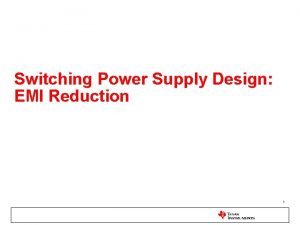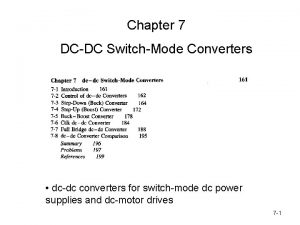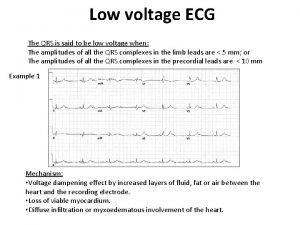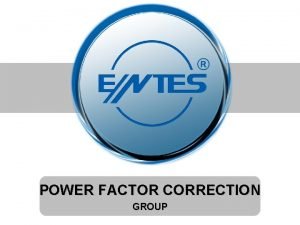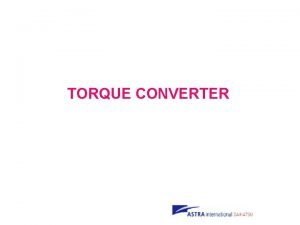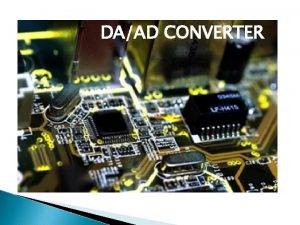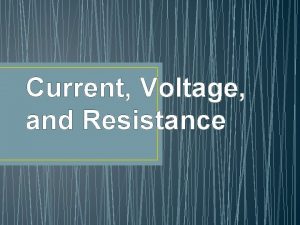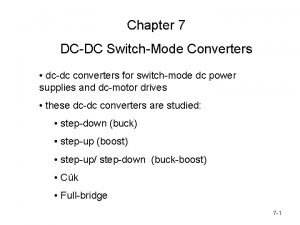Development of a DCDC converter for low voltage














- Slides: 14

Development of a DC/DC converter for low voltage power distribution in LHC upgrades. Stefano Michelis Supervisor: Federico Faccio ELACCO mid-term review 14/11/2008

Who I am Ø 2004, September I obtained the Bachelor in Telecommunications Engineering at Polytechnic of Turin Ø 2006, March, I started a stage contract at CERN Ø 2006, September, I obtained the Master in Electronic Engineering at EPFL in Lausanne, Polytechnic of Turin and INPG Grenoble. Ø 2006, November, I started the Marie Curie Early Stage Training fellow at CERN Ø 2007, March, I started my Ph. D studies at EPFL in Lausanne ELACCO mid-term review 14/11/2008 S. Michelis 2

Outline Ø Power distribution in the trackers l l Ø Use of DC-DC converters l l Ø In LHC trackers Projection to SLHC Advantages Main challenges Attended courses and conferences ELACCO mid-term review 14/11/2008 S. Michelis 3

Distributing power PS No on-detector conversion. Low-voltage (2. 5 -5 V) required by electronics provided directly from off-detector. Sense wire necessary for PS to provide correct voltage to electronics. Patch Panels (passive connectors ensuring current path between different cables. Regulation is very seldom used) Current path from PS to module (or more seldom star of modules) and return. Cables get thinner approaching the collision point to be compatible with material budget. ELACCO mid-term review 14/11/2008 S. Michelis 4

Distributing power ELACCO mid-term review 14/11/2008 S. Michelis 5

SLHC scenario Ø SLHC trackers: 10 x more channels l Ø Impossible to linearly extrapolate the present scheme, this would result in much more material (cooling and/or cables) Need to work on two aspects: l l Minimize power required by electronics Decrease the current to be brought to the tracker in order to limit the power lost on cables (RI 2) ELACCO mid-term review 14/11/2008 S. Michelis 6

Outline Ø Power distribution in the trackers l l Ø Use of DC-DC converters l l Ø In LHC trackers Projection to SLHC Advantages Main challenges Attended courses and conferences ELACCO mid-term review 14/11/2008 S. Michelis 7

Advantages in using DC-DC converters in SLHC 10 x. V, I V, 10 x. I DC-DC Advantages: Ø Decrease of the current Ø Minimize the power used by the electronics Ø Local voltage regulation Ø Modularity ELACCO mid-term review 14/11/2008 S. Michelis 8

Challenges Ø Converters to be placed inside the tracker volume Magnetic field (up to 4 T) Radiation field (>10 Mrd) Environment sensitive to noise (EMI) Ø That’s why we need an R&D ELACCO mid-term review 14/11/2008 S. Michelis 9

DC-DC converter: issues Power dissipation Inductor Vin=25 V Vout=2. 5 V Iout=2 A Scale 1 -10 u. T GND_D Switching noise Rad-hard technology D 2 IND Controller architecture S 2 ELACCO mid-term review 14/11/2008 4. 5 mm 2. 5 mm S. Michelis 10

Design for radiation tolerance The converter requires the use of a technology able to work up to at least 15 -20 V Ø High-voltage technologies are typically tailored for automotive applications Ø Integration of the two switches in 2007 Ø Ø First functional prototype designed and tested in 2008 Ø New design will be submitted on December 1 st ELACCO mid-term review 14/11/2008 S. Michelis 11

Outline Ø Power distribution in the trackers l l Ø Use of DC-DC converters l l Ø In LHC trackers Projection to SLHC Advantages Main challenges Attended courses and conferences ELACCO mid-term review 14/11/2008 S. Michelis 12

Conferences with presentation / poster / papers TWEPP (Topical Workshop on Electronics for Particle Physics) 2007, Prague l S. Michelis et al. “Inductor based switching DC-DC converter for low voltage power distribution in SLHC, ” TWEPP conference, Prague, 2007 IEEE NEWCAS-TAISA, Montreal l S. Michelis et al. “Air core inductors study for DC/DC power supply in harsh radiation environment” IEEE NEWCAS-TAISA conference, Montreal, 2008 l S. Michelis et al. “Feedback loop conception methodology for step-down continuous switching DC/DC converter” IEEE NEWCAS-TAISA conference, Montreal, 2008 TWEPP 2008, Naxos l S. Michelis et al. “Custom DC-DC converters for distributing power in SLHC trackers”, TWEPP 2008 conference, September 2008 l S. Michelis et al. “Noise Susceptibility Measurements of Front-End Electronics Systems”, TWEPP 2008 conference, September 2008 l S. Michelis et al. “Characterization of the noise properties of DC to DC converters for the s. LHC”, TWEPP 2008 conference, September 2008 l S. Michelis et al. “A prototype ASIC buck converter for LHC upgrades ”, TWEPP 2008 conference, September 2008 Other attended conferences PESC (Power Electronics Specialists Conference) 07, Orlando PESC (Power Electronics Specialists Conference) 08, Rhodos ELACCO mid-term review 14/11/2008 S. Michelis 13

Courses and tutorials I am actually enrolled as Ph. D student at EPFL in Lausanne, Switzerland under the supervision of Prof. Maher Kayal Attended courses in Lausanne LOW-POWER, LOW-VOLTAGE ANALOG IC DESIGN, June 2007 MEAD-EPFL, Lausanne, Switzerland TRANSISTOR-LEVEL ANALOG IC DESIGN, June 2007 MEAD-EPFL, Lausanne, Switzerland ADVANCED ANALOG IC DESIGN, August 2007 MEAD- EPFL, Lausanne, Switzerland POWER MANAGEMENT, September 2007 MEAD-EPFL, Lausanne, Switzerland DESIGN FOR HOSTILE ENVIRONMENT AUTOMOTIVE AND INDUSTRIAL September 2007 MEAD-EPFL, Lausanne, Switzerland Ø CMOS PRACTICAL ASPECTS IN MIXED-SIGNAL Ics, August 2007 MEAD- EPFL, Lausanne, Switzerland Ø Ø Ø Other attended courses and tutorials POWER DESIGN TECHNICAL COURSE 2007, National semiconductor, Zurich. POWER ELECTRONIC CONVERTERS FOR DISTRIBUTED GENERATION, Tutorial PESC 07 GLOBAL STABILITY METHODOLOGY FOR SWITCHING POWER CONVERTERS, Tutorial PESC 07 ROBUST ASIC DESIGNS FOR HOSTILE ENVIRONMENTS, Tutorial TWEPP 07 DESIGNING CIRCUIT BOARDS NOT TO FAIL, Tutorial TWEPP 08 PREDICTIVE CONTROL IN POWER ELECTRONICS AND DRIVES, Tutorial PESC 08 CONTROLLING CONDUCTED AND RADIATED EMI ISSUES IN POWER ELECTRONICS DESIGN, Tutorial PESC 08 Ø EMI OF CONVERTERS, AEMC Course, Paris 2008 Ø Ø Ø Ø ELACCO mid-term review 14/11/2008 S. Michelis 14
 Cbi detroit
Cbi detroit Plt 403
Plt 403 Low voltage hazards
Low voltage hazards Buck converter and boost converter
Buck converter and boost converter Switch mode converter
Switch mode converter Buck converter output voltage
Buck converter output voltage Rms output voltage
Rms output voltage Line current and phase current
Line current and phase current Rms to peak to peak conversion
Rms to peak to peak conversion Explain the objective of earthing
Explain the objective of earthing Low voltage ecg causes
Low voltage ecg causes Low voltage three phase choke coil filter reactor in pfc
Low voltage three phase choke coil filter reactor in pfc Introduction to low voltage systems
Introduction to low voltage systems Low voltage electrical injury
Low voltage electrical injury Mid = low + (high - low) / 2
Mid = low + (high - low) / 2



